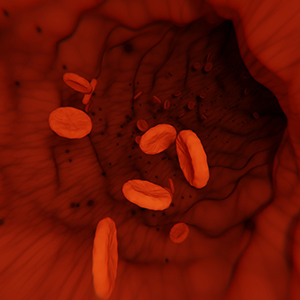Brief Reports
Vol. 2 No. 1 (2023)
Interaction between adenosine diphosphate receptors and protein-kinase C isoforms in platelet adhesion under flow condition

Publisher's note
All claims expressed in this article are solely those of the authors and do not necessarily represent those of their affiliated organizations, or those of the publisher, the editors and the reviewers. Any product that may be evaluated in this article or claim that may be made by its manufacturer is not guaranteed or endorsed by the publisher.
All claims expressed in this article are solely those of the authors and do not necessarily represent those of their affiliated organizations, or those of the publisher, the editors and the reviewers. Any product that may be evaluated in this article or claim that may be made by its manufacturer is not guaranteed or endorsed by the publisher.
Received: 24 August 2022
Accepted: 18 January 2023
Accepted: 18 January 2023
1415
Views
278
Downloads
Similar Articles
- Roger Lijnen, Désiré Collen, The key to fibrinolysis and thrombolysis , Bleeding, Thrombosis and Vascular Biology: Vol. 4 No. 3 (2025)
- CO43 | Early platelet dysfunction in sepsis: an ICU pilot study , Bleeding, Thrombosis and Vascular Biology: Vol. 4 No. s1 (2025)
- PO09 | Comparison of different aggregometry methods for evaluation of platelet function in patients with myeloproliferative neoplasms , Bleeding, Thrombosis and Vascular Biology: Vol. 4 No. s1 (2025)
- Giovanni de Gaetano, When a feminist platelet went to the convention of prostaglandins and thromboxanes , Bleeding, Thrombosis and Vascular Biology: Vol. 4 No. 3 (2025)
- PO01 | Diagnosis of inherited platelet function disorders by platelet aggregometry using a fully automated coagulation analyzer , Bleeding, Thrombosis and Vascular Biology: Vol. 4 No. s1 (2025)
- CO46 | Comparison of reticulated platelet procoagulant role in liver cirrhosis vs. fibrosis , Bleeding, Thrombosis and Vascular Biology: Vol. 4 No. s1 (2025)
- PO58 | Gender differences in primary haemostasis , Bleeding, Thrombosis and Vascular Biology: Vol. 4 No. s1 (2025)
- Marco Cattaneo, Claudia Ghali, Mariangela Scavone, ReDIP, the Italian network for the diagnosis of congenital platelet function disorders , Bleeding, Thrombosis and Vascular Biology: Vol. 3 No. 1 (2024)
- Stefania Momi, Giuseppe Guglielmini, Giulia Ciarroca Taranta, Elisa Giglio, Angela Monopoli, Paolo Gresele, A nitric oxide-donor pravastatin hybrid drug exerts antiplatelet and antiatherogenic activity in mice , Bleeding, Thrombosis and Vascular Biology: Vol. 1 No. 2 (2022)
- Francesca Santilli, Paola Simeone, Rossella Liani, Inflammation, platelets and diabetes , Bleeding, Thrombosis and Vascular Biology: Vol. 2 No. 2 (2023)
1-10 of 84
Next
You may also start an advanced similarity search for this article.







